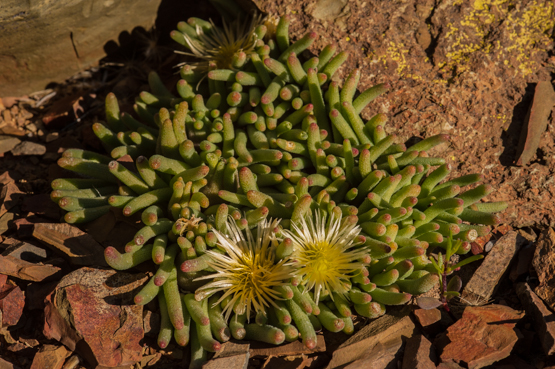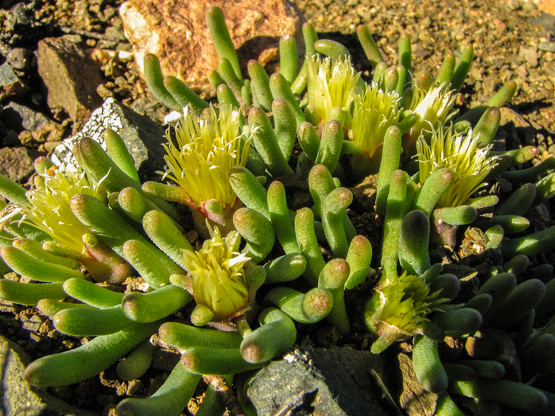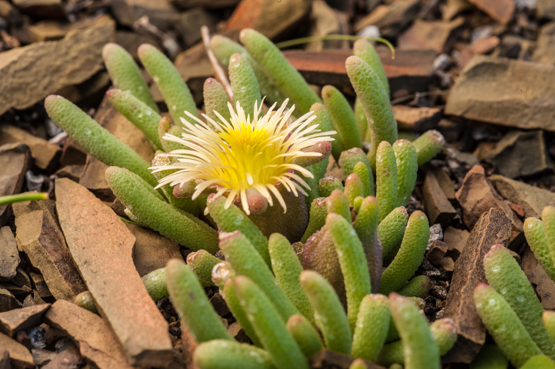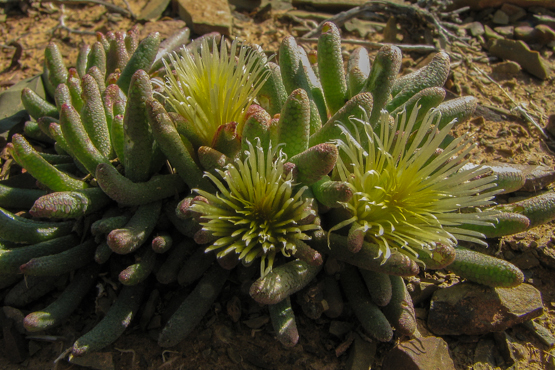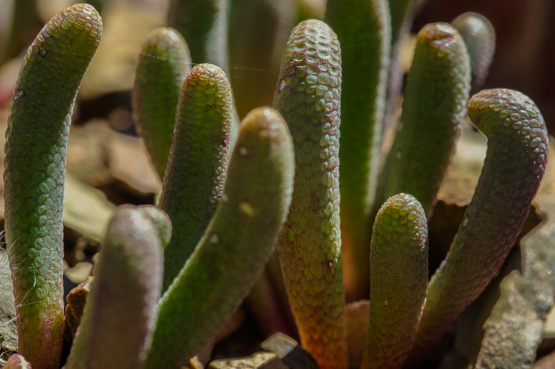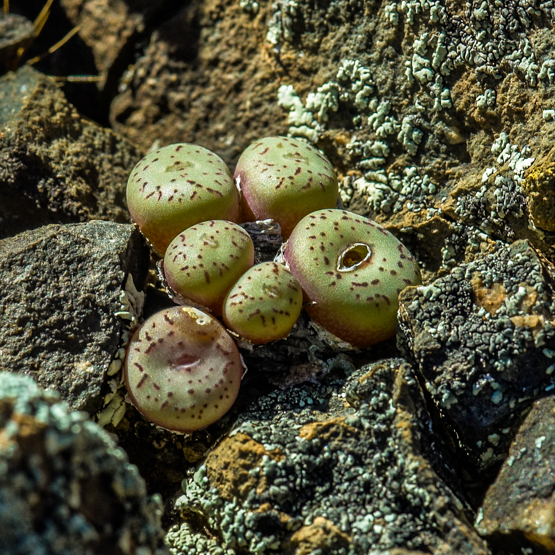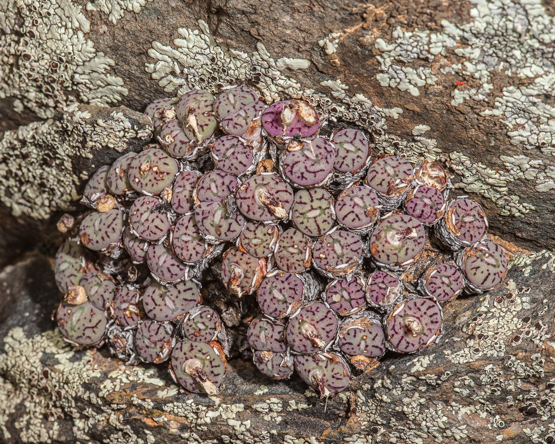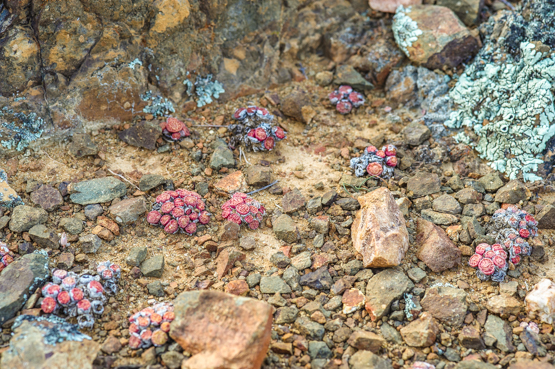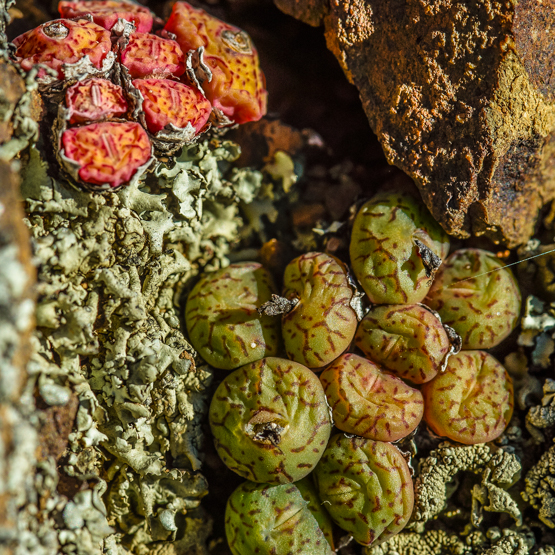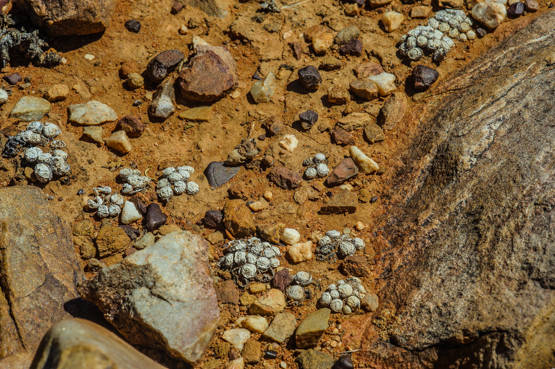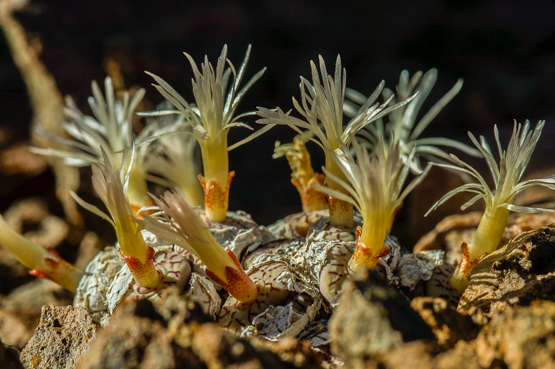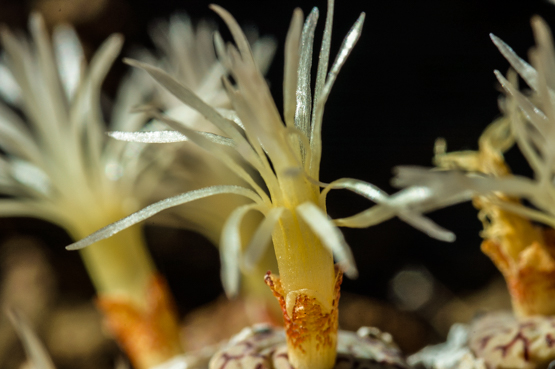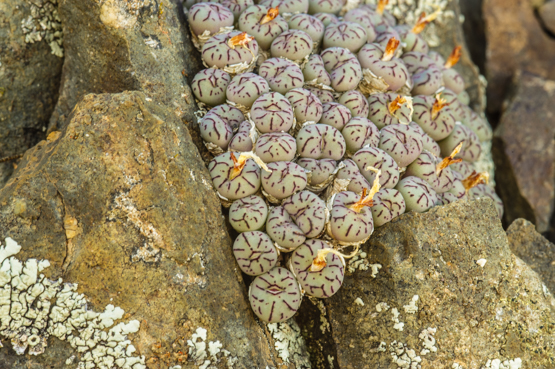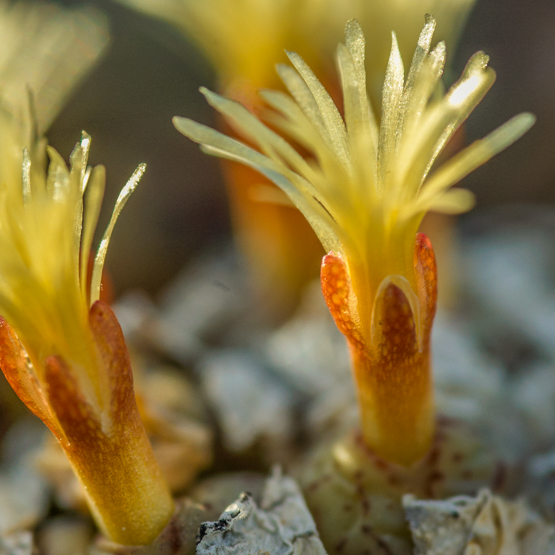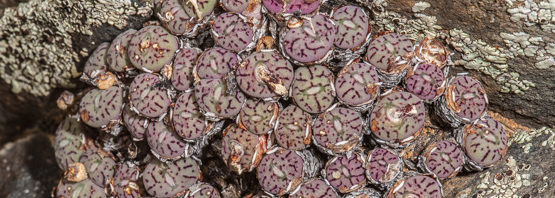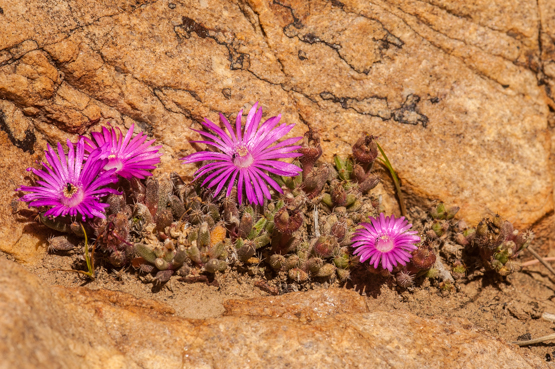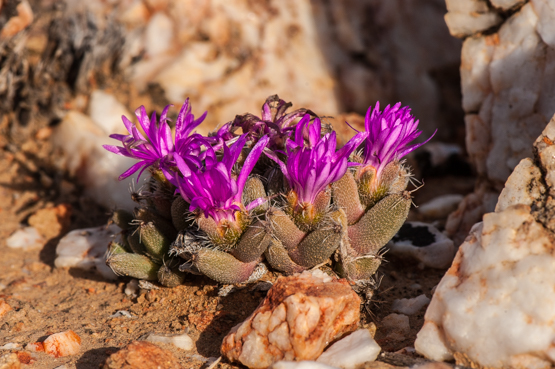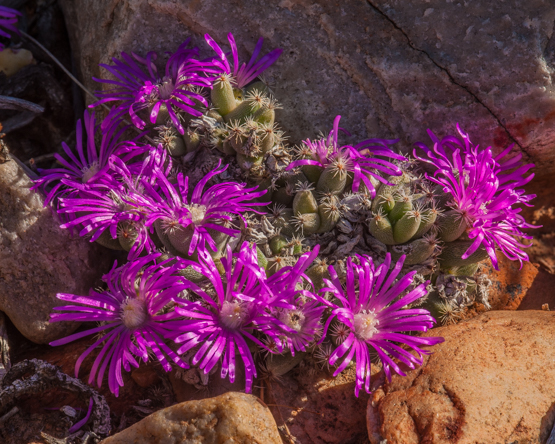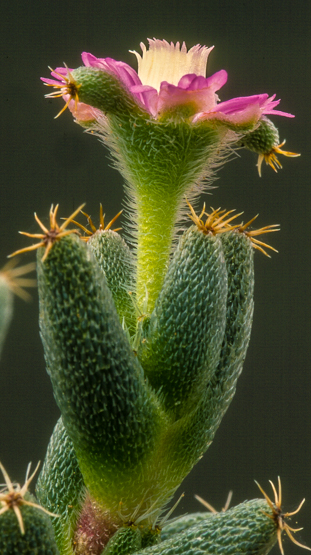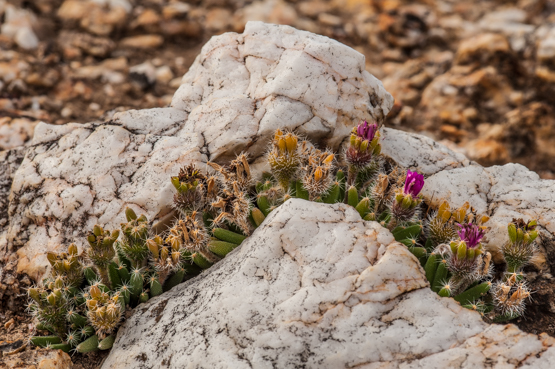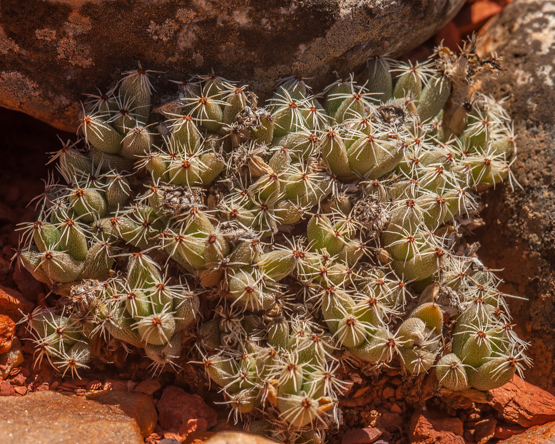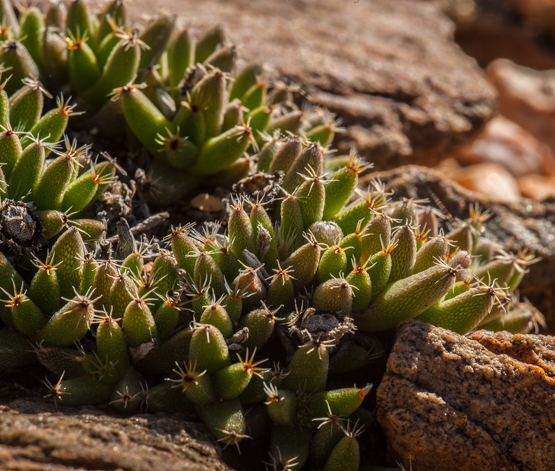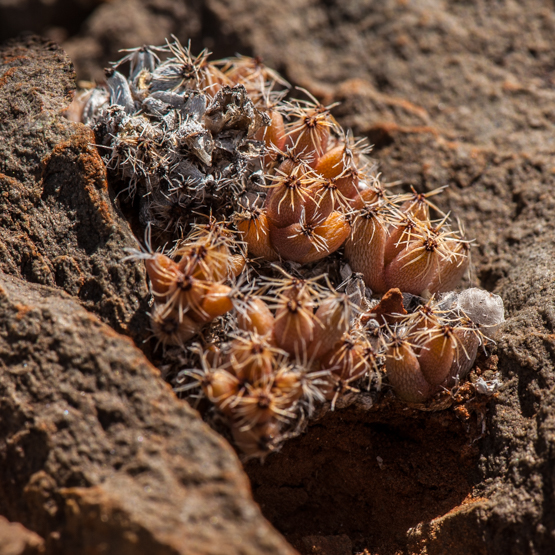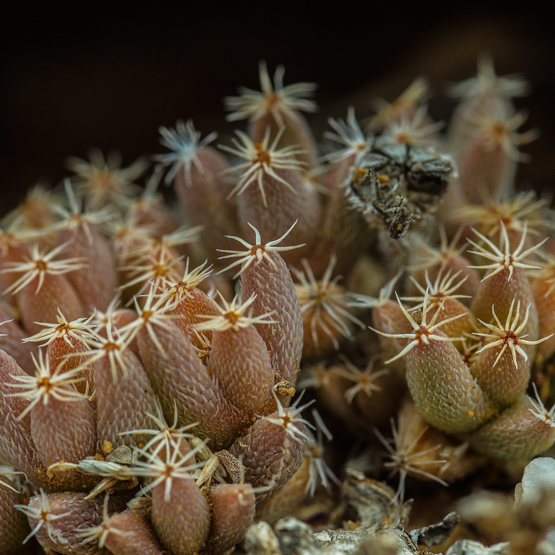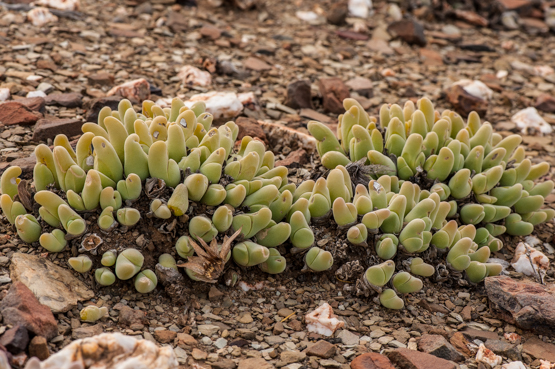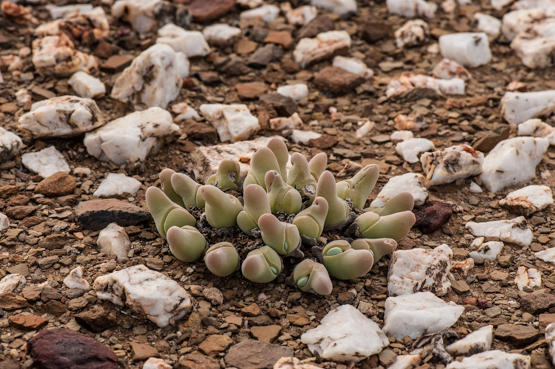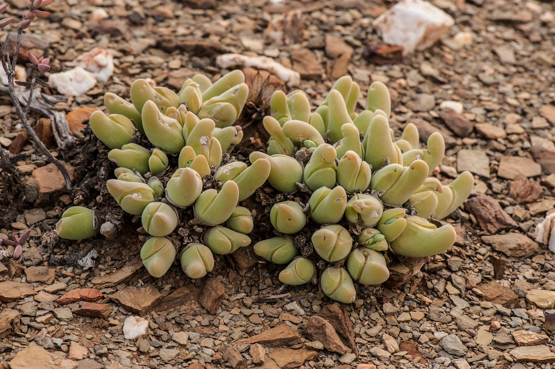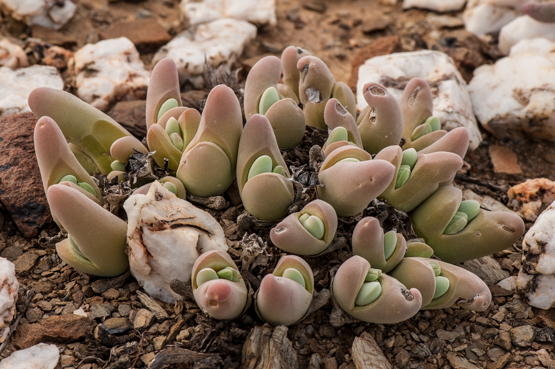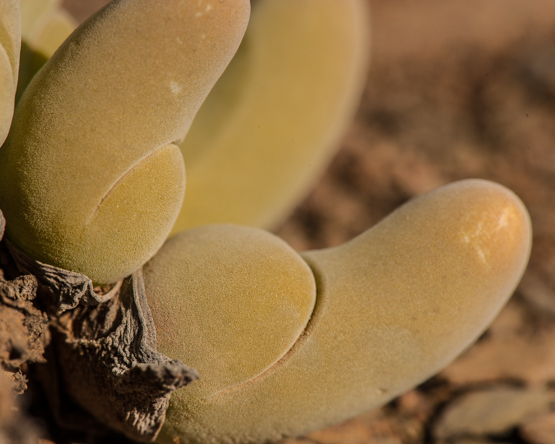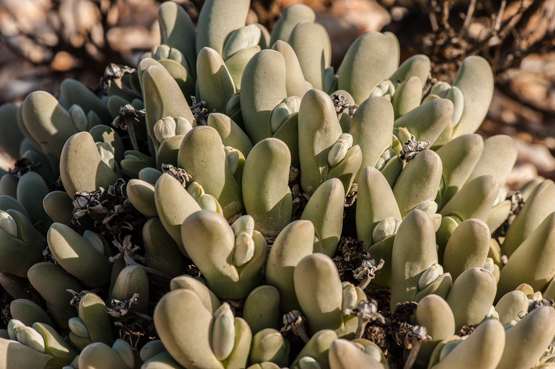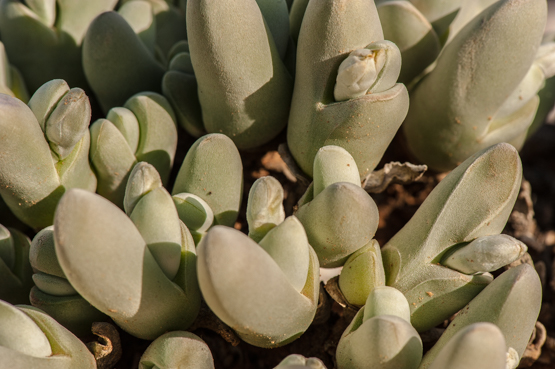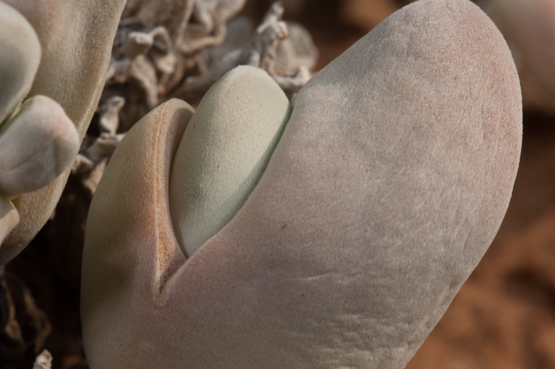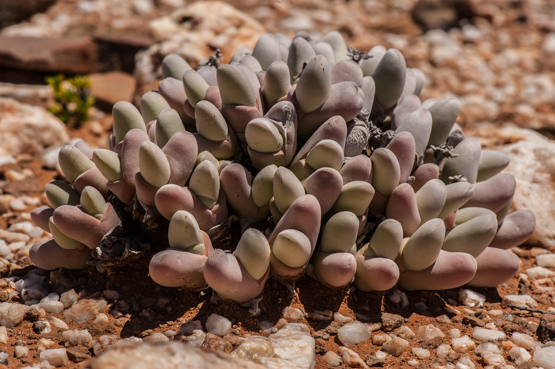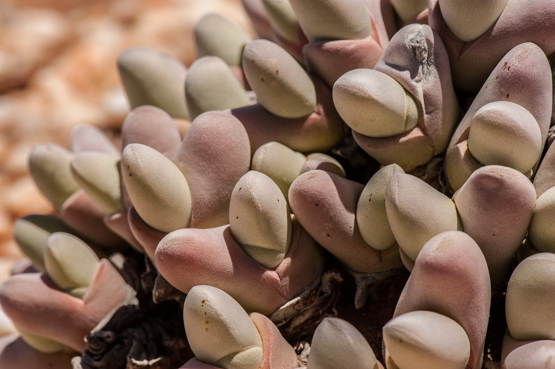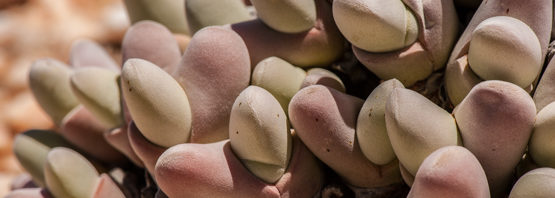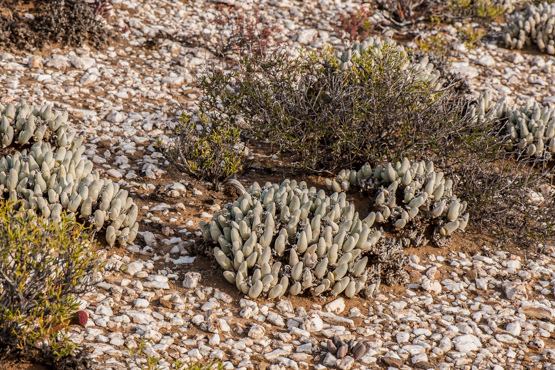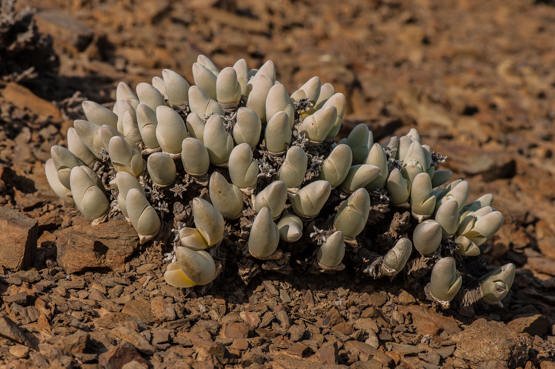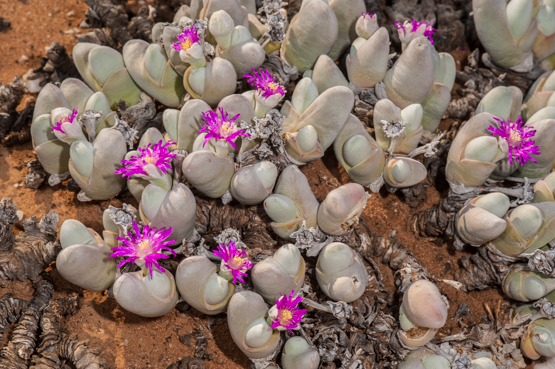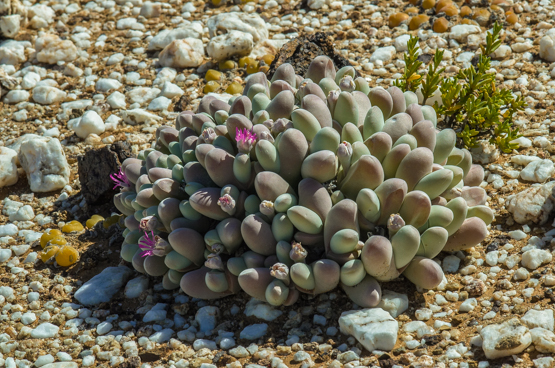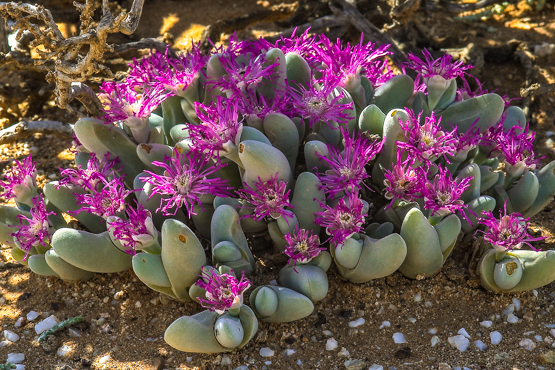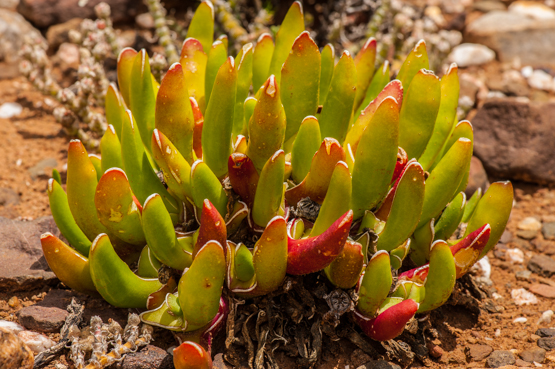Tag: Mesembs
Conophytum minimum (part 2 of 3)
Conophytum minimum (part 1 of 3)
When Adrian Haworth described Conophytum minimum in 1795, it was the smallest known member of the genus Mesembryanthemum (as it was back then). Hence the specific epithet.
It is a member of the section Conophytum – “The original cones and dumplings” as Steven Hammer calls them. As in other members of this section, plants of C. minimum may vary from quite plain and dull to exquisitely marked. This variability has given rise to a long list of synonyms (26 to be exact).
The plants form rather loose mats or compact domes.
The individual bodies are conical to cylindrical, 8-15 (sometimes up to 20) mm long and 10 mm thick, elliptical in outline and with their tops usually truncate (as if cut off). They range in colour from pale green to greyish green and the tops are mottled in various degrees with dark lines and spots.
The flowers are white, pale yellow or pale pink and strongly scented. They appear in autumn (May, June). Although they are described as nocturnal, on cold days they are often open in the morning (up to 10 or 11 am) or late afternoon.
When you want to see the plants in the wild, your best chances are in the Matjiesfontein, Laingsburg, Witteberg area, where they are often locally abundant on shale, sandstone or quartzitic rocks among lichens, often finding shelter in crevices.
The photos in this post and the following two ones, are arranged chronologically so as to give you an idea what the plants look like in different times of the year.
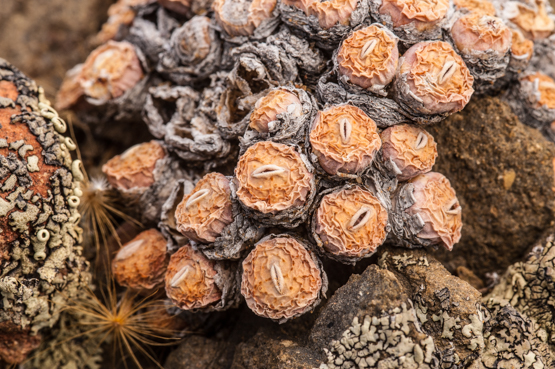
Picture taken 29 Jan. 2012
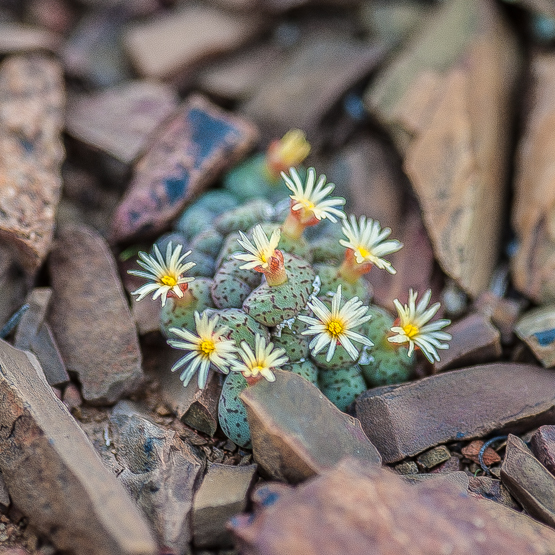
Pictures taken 6 May 2009, around 5.40 PM
Trichodiadema marlothii (part 2 of 2)
Trichodiadema marlothii (part 1 of 2)
In the Montagu area and further to the east and northeast, this species is rather common on quartz patches, in rock crevices and in other stony places. In spite of that, one does not often find it mentioned in the literature.
The species belongs to the group of nicely compact Trichodiademas, of which T. densum is the best known. In the wild, the plants get no taller than 4 cm.
The leaves are beautifully covered in big bladder cells with long points at the tip.
In the description it says that the diadem has 5-10 bristles, but in all the plants I have seen there are about twice as much.
The flowering period is from May through August.
This species can be distinguished from similar ones by the fact that the fruits have 6 compartment, rather than the usual 5.
Gibbaeum pubescens and G. shandii (part 3/3)
Gibbaeum pubescens and shandii (part 2/3)
Gibbaeum pubescens and G. shandii (part1/3)
These two species are closely related and often difficult to tell apart at first sight. In fact there is only one cast-iron distinguishing character.
In The Gibbaeum Handbook (1953), G.C. Nel wrote the following with regard to G. shandii:
” This species is related to, and resembles G. pubescens in its general appearance so much that one can only decide after examining the tomentose covering with a hand lens, whether it is G. pubescens or G. shandii. The tomentose covering of G. shandii consists of separate, stellately branched hairs and the underlying greenish epidermis can be seen between the hairs. With the naked eye, the hairy covering seems continuous. The thick tomentose covering of G. pubescens consists of minute simple hairs pointing downwards and closely adpressed to the epidermis, to such an extent that the underlying epidermis is entirely covered by them. These two species occur either together in the same patch or they may be separated, at times, by a short distance. Both these two species form large white greyish cushions of various sizes.”
He then ends his discussion of this species as follows:
“The description of G. pubescens is valid for that of G. shandii. The only important difference is in the nature of the tomentose covering.”
In the light of the above it is not surprising that in 1983, H. F. Glen decided to reduce the rank of these two species to subspecies (G. pubescens ssp. pubescens and G. pubescens ssp. shandii resp).
Both (sub)species occur in the area between Ladismith and Barrydale in the Little Karoo.
The five pictures of G. pubescens ssp. pubescens shown here were taken at the following dates:
1,2: 30 June 2013
3: 14 Sept. 2010
4,5: 26 Sept. 2006
Glottiphyllum peersii
It is often not easy to identify Glottiphyllum species, but this one is an exception. The very unequal pairs of leaves with their white margins make it very distinctive.
It also differs from most other members of the genus by not occurring in the Little Karoo, but in the Prince Albert-Willowmore area.
Mesembryanthemum (Phyllobolus) resurgens 2
The fact that this species is a deciduous geophyte is reflected in the name, as one of the meanings of the word resurgens is: “Rising again, as from the dead”.
The plants are only up to 3 cm tall, with a thick caudex covered in cork, short stems and
leaves with large bladder cells.
In June-September they produce greenish yellow to pale salmon, distinctly scented flowers about 4 cm in diameter.
If you want to see the plants in nature, you have to go to the Northern or Western Cape Province, where they are widespread in the winter rainfall area from Namaqualand to Ceres and Laingsburg.
